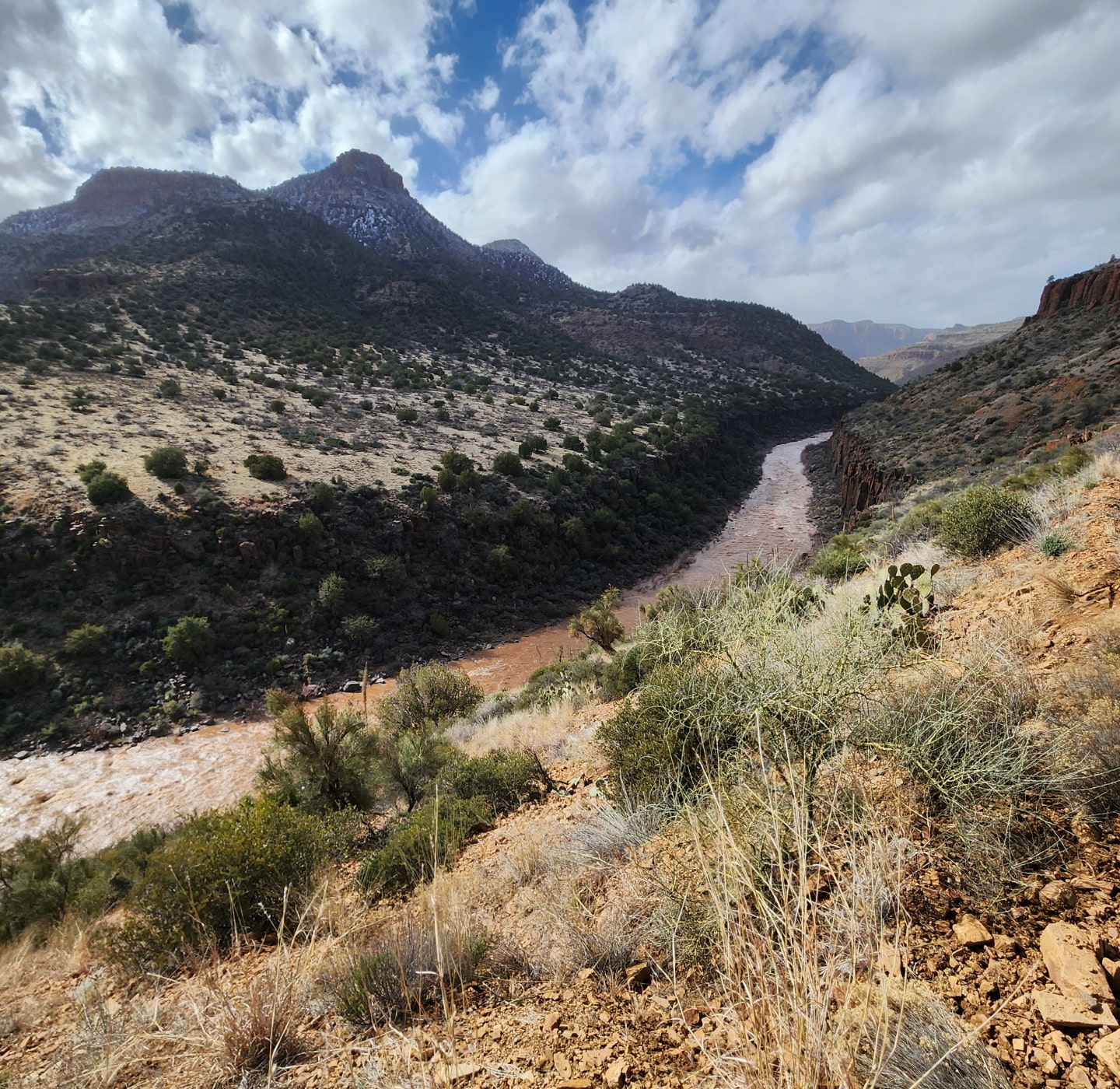Predictions are for Patzers
Nationally, meteorologists argue that Arizona’s water problem is due to a 15 year drought, one which is not likely to change any time soon. The biggest reason they attribute this belief to are the ocean currents in the Pacific, which are typically studied for predicting long-term weather patterns. But yet again for another year, these patterns indicate that the winter will be drier than normal.
It’s believed that the Southwest as a whole has been in a stage of drought for all but a few years since 1999. “Specialists” say that “there is a batter-than-average chance that weather will be drier than normal across the southwestern states.” But how often are meteorologists right? In November, Phoenix produced the second-wettest November day in history but did a single meteorologist predict that? No, not a single one did. Sure they knew it would rain as is relatively easy to tell when heavy clouds start moving your way, but it seems in sum, meteorologists simply gamble with predictions. They make nothing but their best guesstimate.
There is no way to know for certain how weather is going to act, especially when you attempt to predict for whole seasons. For instance, was Colorado aware that a once in every 120 year flood was about to wreck havoc on the state? No they did not, they knew it would rain but not nearly as much as it did. And if there was anything a specialist in weather should be able to predict it would be something of that magnitude… yet, no one was able to. Where was that prediction, or the one of the November rains around Phoenix?
Meanwhile In Arizona, Sandy fabritz-Whitney, director of the Arizona Department of Water Resource (ADWR) is getting tire of the “bad press” that continually comes from outside the state. One such press release claimed that Arizona was so dry, no one should attempt to live let alone farm in the all-to-dry state. It would seem that everyone except Arizonans believe the state is running out of water which is simply not true.
No One Knows The Future and Predictions are Rarely Accurate
Claiming there is a drought is one thing, water supply usage, regulation, and management is completely another. Sure, considering the state does not receive much rainfall of its own comparatively to other areas, and is reliant on the runoff from other states, state regulators need to be careful as again, you never know what the whether is going to do. But it would seem people often forget that Arizona is after all mostly considered a desert and that much of the water the state receives has always come from outside the state. But a meteorologist doesn’t get paid to say that things are as they should be, they are paid to predict weather patterns. Which is something they can almost never do right.
For instance, the Salt River Project’s Roosevelt Lake, east of Phoenix, is currently at 55 percent of capacity. Last year at this time, it was at about 49 percent. Positive appearing statistics like these are abound, yet what will you most likely hear, that all is well and dandy, or that Lake Mead has dropped by 100ft! And look at these photos to boot! It’s nothing short of sensationalism, and it’s easier to make sales, even when selling your predictions as meteorologists do, when you proclaim that something terrible is about to occur. or vice versa, that something wonderful is going to happen. People are rarely given notice or praised for saying that they don’t know. They would rather gamble on a prediction, even a wild one, in hopes that they are right. Of course they are not entirely shooting in the dark, but if you look at any profession where making predictions is their job, and look over the course of the accuracy of the predictions made, people rarely come anywhere close.
Beyond meteorologists, the same goes for financial advisers, real estate agents, and even economists. Think of it, what economist or financial adviser predicted our last near recession before it happened, or real estate agent the housing bubble popping? Things are always more clear in hindsight, but sadly, history does not always teach us everything. Sometimes there are patterns, sometimes not. Other times it may appear there is a pattern but it could merely be coincidence. Arizona has received less rainfall in the last 15 years than in years past… ok. So meteorologists, to be safe, continue with the doomsday scenario and make it out to be worse than it really is. If it ends up remaining dry hen they can say “see, just as I predicted”, but if it does indeed rain and let’s say a lot, they’ll claim it was some “unforeseen event.” But how is rainfall “unforeseen’ when your job is to exactly see that type of thing coming. Colorado was in a similar boat and not a soul warned of the epic floods that were about to hit. The same holds true for economists, financial advisers, and real estate agents.
No one knows in the moment, and people often think they can foretell the future by studying the past of events that are not so easily understood. People that make predictions can easily hide behind the fact that unforeseen factors came into play, which allows them to shirk the fact that they were wrong, meanwhile be praised when correct. It allows for the all too perfect win-win situation and professional predictors abuse this with immunity.
Let’s not also forget that water in Arizona doesn’t have to fall in rain form for the state to receive it and many people don’t understand that much of the water Arizona relies on is fed by both Colorado and Wyoming. These states on the other hand are not having necessarily terrible years for rainfall…. Colorado especially and as such Arizona has less to worry about. The rivers will run, the grass will be watered, and everyone can still take showers, clean their dishes, clothes, and flush the toilet.
To keep it in perspective, there are more than 8 million acre feet of water stored in aquifers in Central Arizona which only adds to the already existing 91 million acre feet of groundwater stored in aquifers elsewhere throughout the state. Over the last 50 years, the population in Arizona has swelled by 500% to a total of around 6.5 million people today. Can you imagine how much our water consumption has risen in that time? Would you be surprised to find out that over the last 50 years its remained relatively the same at about 7.5 million acre feet annually? So do not be alarmed, the lakes and rivers aren’t drying up in Arizona, and overall things are looking much better than in years past. We obviously don’t care to speculate or give false predictions on the amount of expected rainfall, but we are also not overly worried. We’ll still be hitting the rivers hard in 2014, drought or not, because in the end, Arizona is and has been a desert for a long time. Nothing has changed that, and nothing will either. Things are running as they should here and thankfully so.
At Salt River Rafting Arizona, we love providing the best guided whitewater rafting trips on the Arizona Salt River. If you want to schedule a trip with us, such as a full-day rafting trip, or half-day rafting trip, please be sure to contact us! We’d love to provide you with one of your next greatest experiences and memories!







